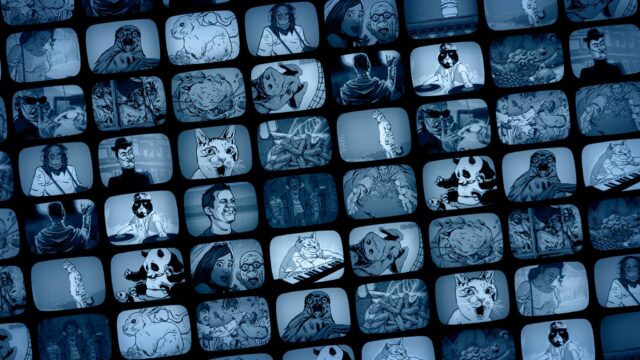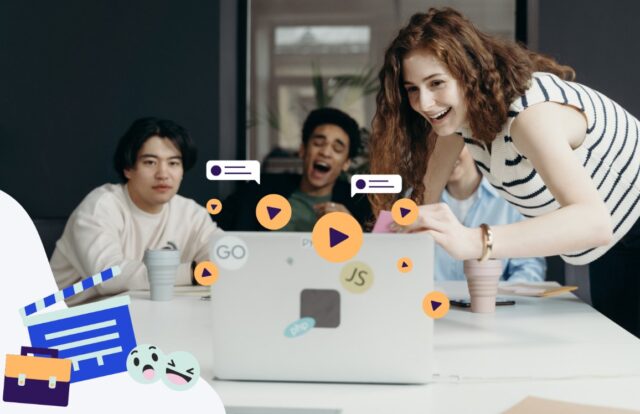
YouTube, as a platform, continuously evolves, offering an array of opportunities for content creators to engage and entertain their audiences. At its core, YouTube is about storytelling, and the way these stories are told has a significant impact on their success and viewer engagement.
With millions of channels and an even larger global audience, creators face the challenge of standing out in a crowded space. Storytelling becomes not just an art but a strategic tool.
It bridges the gap between creator and viewer, transforming a simple video into a shared experience. As digital trends shift, so do storytelling techniques, adapting to new technologies and viewer preferences.
In the vast and dynamic world of YouTube, where content creators, including those associated with AIR Media Tech, strive to capture the attention of viewers, storytelling remains a powerful tool.
Effective storytelling can turn a simple video into a captivating experience that resonates with audiences. As the platform evolves, so do the techniques used to tell stories. Let’s explore some innovative storytelling techniques for YouTube content creators.
Interactive Storytelling

Engagement is key on YouTube, and interactive storytelling, especially, brings the audience into the narrative. Creators can utilize features like polls, annotations, and clickable links to allow viewers to make choices that influence the direction of the story.
This not only enhances viewer involvement but also creates a personalized viewing experience.
For instance, in a gaming channel, creators can present alternate choices at key decision points, letting the audience vote on the character’s actions.
This not only creates a sense of agency for the viewers but also fosters a sense of community as they collectively shape the unfolding story.
Additionally, creators can encourage viewers to share their own ideas or story suggestions, turning the video into a collaborative project.
Non-Linear Narratives
Breaking away from traditional linear storytelling, non-linear narratives can be a breath of fresh air for YouTube audiences. Creators can experiment with flashbacks, parallel storylines, or even episodic content that can be watched in any order.
This approach keeps viewers intrigued and encourages multiple viewings to uncover the full story.
In a travel vlog, for example, creators can present snippets of their journey in a non-chronological order, creating curiosity and allowing viewers to piece together the narrative in their own way.
Moreover, creators can use annotations or cards to guide viewers to related videos that provide additional context or explore specific aspects of the story in more detail.
Immersive 360-Degree Videos
Take storytelling to the next level by incorporating 360-degree videos. Viewers can control their perspective, allowing them to explore the environment and feel more connected to the narrative.
This technique is especially effective for travel vlogs, virtual tours, or any content where the setting plays a crucial role.
Imagine a documentary-style video exploring a historical site. Viewers can pan around to examine the details while the narrator provides information, creating a more immersive and engaging educational experience.
Creators can also use annotations to guide viewers’ attention to significant elements within the 360-degree environment, ensuring that no aspect of the story is overlooked.
Collaborative Storytelling

Collaboration is a hallmark of YouTube, and creators can leverage this by engaging in collaborative storytelling.
This involves partnering with other creators to develop a cohesive narrative across different channels. Each creator contributes a segment of the story, creating a unique and shared experience for their audiences.
For example, in a collaborative storytelling project, different channels could explore different characters in a fictional universe, contributing to an overarching narrative. Viewers then follow the interconnected stories on various channels.
Creators can enhance this experience by organizing joint live streams, where they discuss and interact with the audience, further blurring the lines between the individual channels and creating a unified storytelling experience.
Transmedia Storytelling
Extend the story beyond YouTube by incorporating multiple media platforms. This could include social media, blogs, podcasts, or even physical events.
Transmedia storytelling allows creators to expand the narrative universe, providing fans with a more immersive and comprehensive experience.
Consider a mystery series where the main clues are scattered across YouTube videos, Instagram posts, and a dedicated podcast. Viewers need to piece together information from different platforms to unravel the complete story.
Creators can actively engage with their audience on each platform, encouraging discussions, theories, and the sharing of discoveries, creating a vibrant and participatory transmedia experience.
Data-Driven Storytelling

In the age of analytics, data-driven storytelling can be a game-changer. Creators can analyze viewer metrics to understand audience preferences and tailor their content accordingly.
This personalization not only enhances the viewing experience but also ensures that the content remains relevant and engaging.
For instance, a beauty and fashion channel can analyze which types of content receive the most engagement and customize future videos based on viewer preferences, creating a more targeted and appealing narrative.
Creators can also use data insights to identify trends or recurring themes in viewer feedback, allowing them to refine their storytelling approach over time.
Virtual Reality (VR) Experiences
For creators with access to VR technology, immersive storytelling experiences can be crafted. Viewers can enter a virtual world and become active participants in the story.
Whether it’s a virtual concert, a simulated adventure, or a narrative-driven experience, VR opens up new possibilities for storytelling on YouTube.
Imagine a music artist creating a VR concert experience where viewers can virtually attend the performance, interact with the environment, and feel like they are part of the live event, enhancing the emotional connection with the artist and the story behind the music.
Creators can also use VR to transport viewers to unique locations, providing a firsthand perspective and making the storytelling experience more impactful.
Minimalist Storytelling

Sometimes, less is more. Creators can experiment with minimalist storytelling, focusing on the power of visuals, emotions, and subtle narratives.
This approach can be particularly effective for short-form content, where brevity and impact are crucial.
In a short film or animation, creators can use minimal dialogue and rely on visuals and music to convey a powerful and emotionally resonant story. This simplicity can make a lasting impact on viewers in a brief timeframe.
Creators can also use strategic pauses or moments of silence to let the audience absorb and interpret the story in their own way, fostering a deeper connection.









